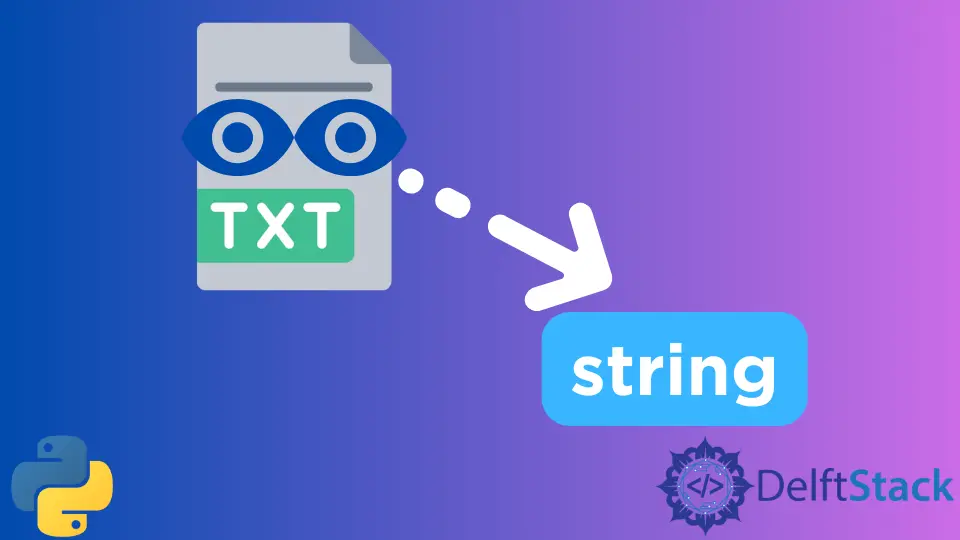在 Python 中将文件读取为字符串
-
在 Python 中使用
read()方法将文本文件读取为字符串 -
在 Python 中使用
pathlib.read_text()函数将文本文件读取为字符串 -
在 Python 中使用
join()函数将文本文件读取为字符串

在 Python 中,我们有内置函数可以处理不同文件类型的文件操作。文本文件包含一系列字符串,其中每行以换行符\n 终止。
在本教程中,我们将学习如何在 Python 中将文本文件读取为字符串。
在 Python 中使用 read() 方法将文本文件读取为字符串
文件对象的 read() 方法使我们可以一次从一个文本文件中读取所有内容。首先,我们将创建一个文件对象,并使用 open() 函数以阅读模式打开所需的文本文件。然后,我们将 read() 函数与此文件对象一起使用,以将所有文本读入字符串并按如下所示进行打印。
with open("sample.txt") as f:
content = f.read()
print(content)
输出:
sample line 1\n sample line 2\n sample line 3\n
当我们读取文件时,它也会读取换行符\n。我们可以使用 replace() 函数来去掉该字符。此函数将用该函数中的指定字符替换字符串中的所有换行符。
例如,
with open("sample.txt") as f:
content = f.read().replace("\n", " ")
print(content)
输出:
sample line 1 sample line 2 sample line 3
在 Python 中使用 pathlib.read_text() 函数将文本文件读取为字符串
pathlib 模块已添加到 Python 3.4 中,并具有可用于文件处理和系统路径的更有效方法。该模块中的 read_text() 函数可以读取文本文件并在同一行中将其关闭。以下代码显示了这一点。
from pathlib import Path
content = Path("sample.txt").read_text().replace("\n", " ")
print(content)
输出:
sample line 1 sample line 2 sample line 3
在 Python 中使用 join() 函数将文本文件读取为字符串
join() 方法允许我们在 Python 中连接不同的可迭代对象。我们也可以使用此方法将文本文件读取为字符串。为此,我们将使用文件对象读取所有内容,然后使用列表推导方法,并使用 join() 函数将它们组合在一起。下面的代码实现了这一点。
with open("sample.txt") as f:
content = " ".join([l.rstrip() for l in f])
print(content)
输出:
sample line 1 sample line 2 sample line 3
这里的 rstrip() 函数从行中删除所有尾随字符。
Manav is a IT Professional who has a lot of experience as a core developer in many live projects. He is an avid learner who enjoys learning new things and sharing his findings whenever possible.
LinkedIn相关文章 - Python File
- Python 如何得到文件夹下的所有文件
- Python 如何查找具有特定扩展名的文件
- 如何在 Python 中从文件读取特定行
- 在 Python 中读取文本文件并打印其内容
- 在 Python 中实现 touch 文件
- 在 Python 中逐行读取 CSV
